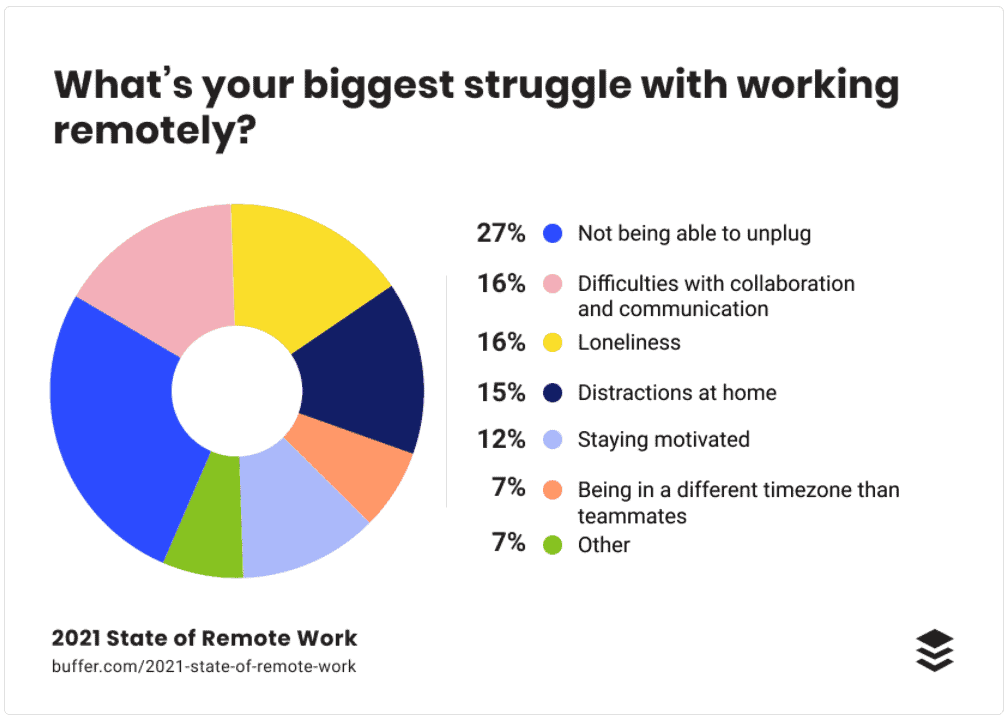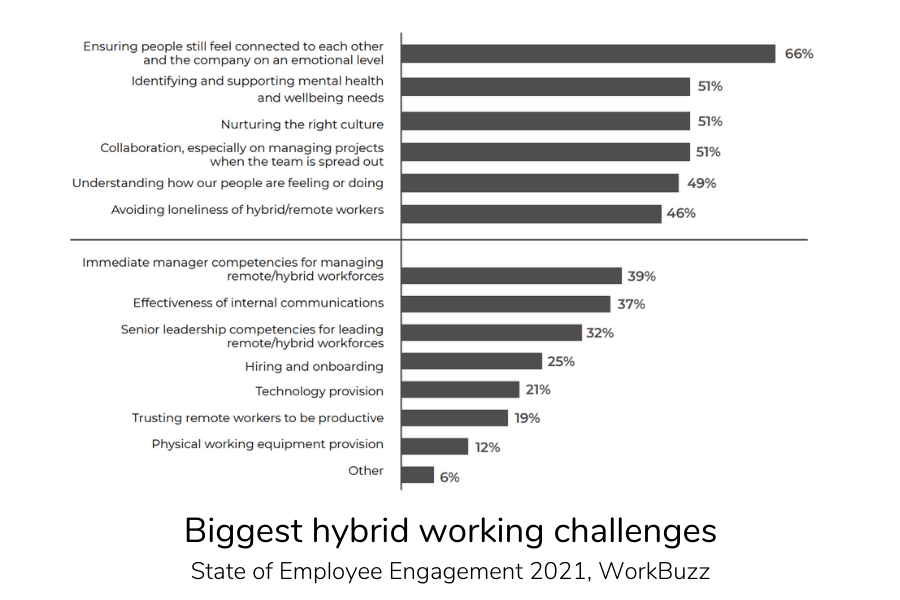How Online Group Greeting Cards Help Bridge the Employee Engagement Divide


2020 was a year that transformed the place of work. There was no choice but adopting and accelerating plans for a hybrid workplace. Covid-19 forced the issue and guillotined office-based work.
Now, more than a year on, there are a plethora of studies looking back at the experience of staff and organisations. Plenty show how companies adapted and evolved to successfully keep their operations running. Adoption of video-conferencing, collaboration tools, and updated communication devices was rapid. New language forms became commonplace - how Zoom zoomed past the competition to become the generic term for a video-conference was quite remarkable.
Recognising employees is now more important than ever.
Suddenly forced to work from home and ‘carry on as normal’ was no doubt a major shock to many. No dedicated workspaces, sharing spaces with a family also locked down, variable internet connection speeds, company equipment not configured for remote working and becoming a battleground between IT security and business operations teams. These and a host of other factors came to pile pressure onto staff who were striving to ‘carry on as normal’ and deliver for the organisation.

Employee engagement is a critical driver of success for all organisations, whether single office SME or multiple location private and public enterprises. Poor engagement delivers poor outcomes and experiences for customers and staff alike. With employees forcibly disengaged physically, a major challenge is to prevent new working practices disengage employees mentally. Workplace culture has been challenged head-on and, perhaps inevitably, it started to buckle in many instances. The employee emotional engagement divide is wider for many as pre-pandemic office culture vapourised almost overnight.
Why wait? If a coworker has been great then celebrate. A work anniversary, going the extra mile or stellar performance? Whatever the reason a Thankbox allows everyone to show their appreciation.
The effect of remote working on emotional wellbeing and team dynamics.
The Buffer 2021 State of Remote Work Report cited ‘Not being able to unplug’, ‘Difficulties with collaboration and communication’, and ‘Loneliness’ as the biggest struggles experienced by remote workers.

WorkBuzz, a UK-based, employee engagement platform recently produced its annual State of Employee Engagement Report, sub-titled ‘Adapting to the new working world’. In many respects it has an employee centric approach, and identified the top three priorities for HR and people teams as:
Improving employee engagement and the overall employee experience
Supporting employee wellbeing/overall wellness
Creating diverse and inclusive workplaces
These findings highlight the effect of home/remote working on the individual. It’s no surprise the Health and Safety Executive (HSE) recognises home workers for the first time in its 2020 guidance on protecting lone workers. The Institution of Occupational Safety and Health (IOSH) also identifies potential stress inducers for lone and remote workers, and provides suggestions on how to get closer to how employees actually feel.
Remote working is, well, remote and lonely.
The human experience of working in close proximity to other people is missing. And that essentially will drive feelings of loneliness, challenge wellbeing and possibly cause behaviours consistent with presenteeism - i.e. not unplugging. Remote working may well be a success for many when judged on criteria of productivity and technology, but the picture is different through the lens of emotional engagement at work (while at home!).
So how to keep emotional engagement levels up and wellbeing positive? A commonsense mindset accepts that to understand how employees feel you have to first listen. It is this aspect that WorkBuzz identifies as being critical for successful evolution to more hybrid and remote working in the post-pandemic world.
Among the recommendations made are more formal aspects like introducing more pulse surveys between the annual engagement snapshot, training leaders and operational managers in communication techniques for the modern workplace, and acting more in real-time.
However, in this transition to a hybrid new-normal the single greatest challenge (cited by 66% of organisations) identified in the report is:
ensuring people still feel connected to each other and the company on an emotional level

So where do online group greeting cards fit into all this?
Because we’re dealing with feelings of belonging and personal worth, any amount of organisation led communications comes with associated connotations. If things are personal, they tend to be more sincere, more heartfelt and consequently more valued. Put simply we all love to be loved. That’s human.
So, a group ecard from colleagues and co-workers, whilst a small thing, carries a hefty and genuine dose of goodwill, love and sincerity. That, in turn, delivers some powerful and positive effects on group dynamics and bonding.
Dawn Smedley, WorkBuzz: “we are huge believers in personal and informal many-to-one communication. It is the perfect foil to more corporate, programme led messaging. It is flexible, it can be instigated for any reason - we recommend clients use online group cards for onboarding, personal milestones and appreciation for great work among teams - and it carries with it a sincerity that is totally authentic. Above all it is fun. It doesn’t matter if someone is leaving, getting married, is promoted, delivered a great project result or has gained a qualification. People can simply express themselves as individuals, and even more so now digital media can be added. Virtual group cards are an essential ingredient in increasing feelings of employee belonging and wellbeing - all things that can suffer as a consequence of not being together physically.”
Doing the 'good' thing
It all lends weight to our core belief in the value of an office group card here at Thankbox. We see testimonials and review use cases that, whilst anecdotal, convince us that to brighten someone’s day is simply a good thing to do. Here's an extract from feedback one of our customers sent (unsolicited) to us:
I highly doubt I will be buying a card again for work. It’s so easy to pass on to the recipient - she texted me straight away saying she was in tears reading the kind words from the comfort of her sofa!
To be clear, happy tears here.
To know the humble online group card can play a central role in tackling some of the biggest challenges of the evolving modern workplace is humbling to us.
Why wait? If a coworker has been great then celebrate. A work anniversary, going the extra mile or stellar performance? Whatever the reason a Thankbox allows everyone to show their appreciation.
Want to do the good thing?
It takes seconds. Then invite your colleagues and team members to contribute - personal messages, videos, photos, Gifs and online gift collection - and let someone feel appreciated and special.
A Thankbox e-card is guaranteed to brighten someone's day, whatever the reason.
Help green the world a little bit more with a Thankbox.
We strive to practice what we believe in. When you send a Thankbox you help the planet in small way...
🌲 We plant a tree for every 10 Thankboxes sold
🔋 100% of our electricity consumption is 100% green generated
💻 We are a modern, distributed organisation. No wasteful offices, travel or infrastructure
😊 No card, no paper, no delivery miles, no waste
🌟 We're rated 4.9/5.0 on Capterra
Thankbox is a brilliant service! We have used this many times in our business which has been ideal while working remotely to still send birthday messages / congratulatory messages / farewell messages to colleagues and still allows for that personalised feel with all the gifs and individual messages which can be added! We will definitely continue using this service!
A customer review on Trustpilot ⭐⭐⭐⭐⭐
Photo by Thought Catalog on Unsplash




